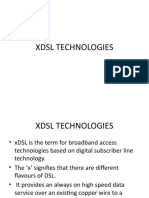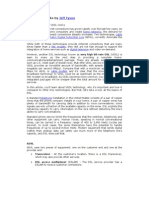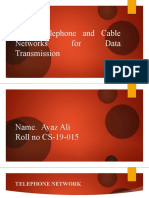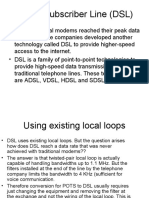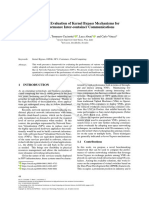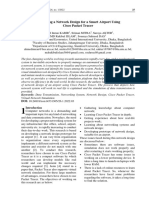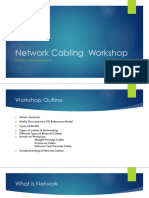0% found this document useful (0 votes)
86 views14 pagesData Communication and Networking
Digital Subscriber Line (DSL) technologies like ADSL, HDSL, SDSL, and VDSL transmit data over existing copper telephone lines. ADSL provides asymmetric speeds with higher download bandwidth. SDSL and HDSL provide symmetric speeds. VDSL offers the highest speeds of up to 52 Mbps down and 16 Mbps up using fiber to reduce distances limitations. DSL technologies allow broadband internet access over traditional phone lines.
Uploaded by
Prashant YelpaleCopyright
© © All Rights Reserved
We take content rights seriously. If you suspect this is your content, claim it here.
Available Formats
Download as PPTX, PDF, TXT or read online on Scribd
0% found this document useful (0 votes)
86 views14 pagesData Communication and Networking
Digital Subscriber Line (DSL) technologies like ADSL, HDSL, SDSL, and VDSL transmit data over existing copper telephone lines. ADSL provides asymmetric speeds with higher download bandwidth. SDSL and HDSL provide symmetric speeds. VDSL offers the highest speeds of up to 52 Mbps down and 16 Mbps up using fiber to reduce distances limitations. DSL technologies allow broadband internet access over traditional phone lines.
Uploaded by
Prashant YelpaleCopyright
© © All Rights Reserved
We take content rights seriously. If you suspect this is your content, claim it here.
Available Formats
Download as PPTX, PDF, TXT or read online on Scribd
/ 14











